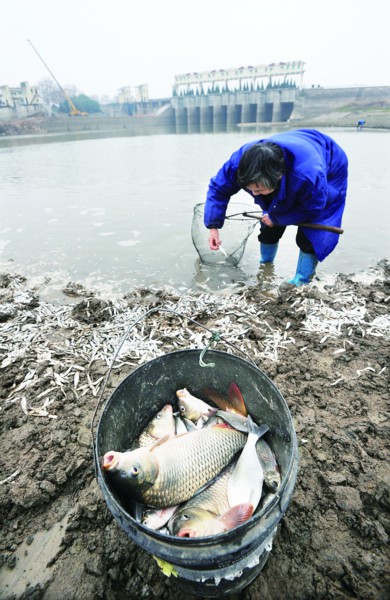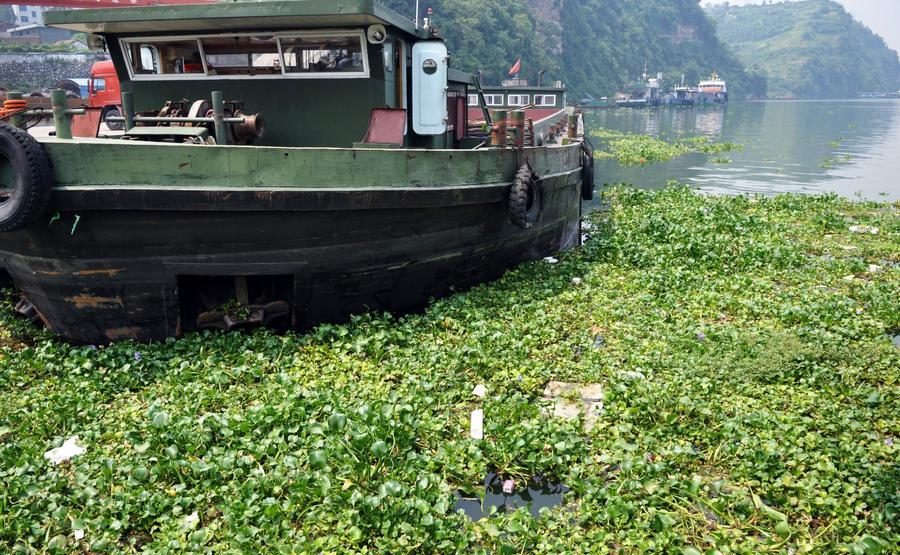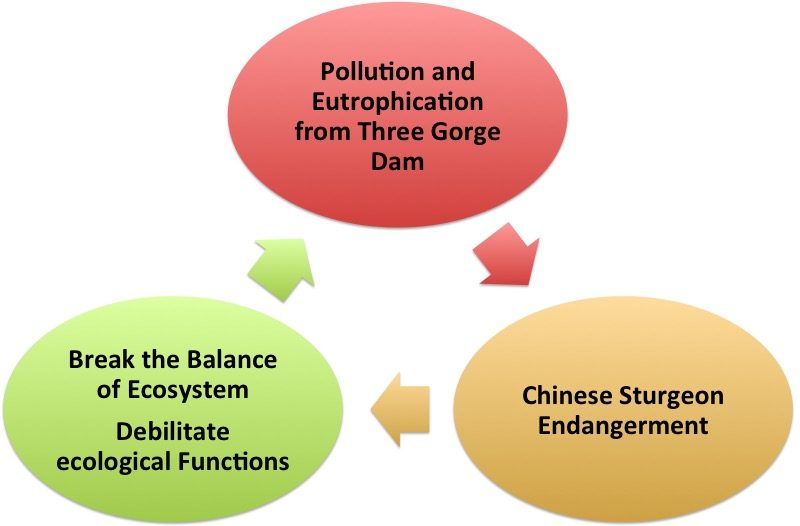Disruption of the Food Chain
Chinese sturgeon endangerment and loss of biodiversity in Yangtze River region could cause many devastating biological and ecological consequences.
-

Massive fish die-off in Yangtze River (Liu, Liu, & Huang, 2016) The decline of this large predatory species could lead to an increased growth of smaller predators, because the Chinese sturgeon could no long exert sufficient force on those small predators (Sodhi, Brook, & Bradshaw, 2009).
- This increase of smaller predators heightens the vulnerability of prey at lower levels in the food chain, disrupting the stability of the entire food web.
- Co-extinction between interdependent taxa could occur, leading to catastrophic massive species die-off (Sodhi et al., 2009).
Loss of Ecological Functions
The Chinese sturgeon provide essential ecosystem functions, and their decreasing populations can make the ecosystem more vulnerable to other environmental degradation (Sodhi et al., 2009).
In the case of Yangtze River, the nutrient-recycling process, disease risk reduction and ecological balance provided by the Chinese sturgeon are weakened due to the species endangerment. This weakness worsens the adverse impacts of the Three Gorge Dam, such as pollution and eutrophication, a process in which the excessive nutrients in the water body cause a dense growth of aquatic plants that kills other animals due to the lack of oxygen. These factors could then accelerate the sturgeon endangerment, forming a vicious cycle in which the causes and consequences of species endangerment in the Yangtze River intensify and aggravate each other.

Water Safty Issue for Local Residents

The environmental issue of sturgeon endangerment has also indirectly affected the living of local residents. As 1.13 million people from the reservoir area have been forcibly relocated, the resettlement has been accompanied with increases in drinking water toxin levels, because the government compensation could not protect these people from the increasing water pollution caused by the species endangerment (Wilmsen, 2016). To cobble together a living, these resettlers mostly become the manual laborers to contribute to the reconstruction effort of the Three Gorge Dam project; it has made these people become a gear maintaining the operation, as well as putting them into the species endangerment cycle that had led to their deprivations and health risks in the first place (Wilmsen, 2016).

Sources:
Li, F. (1999). The immigration of the Three Gorge Dam Project. [Photograph]. Retrieved from http://www.chinanews.com/tp/hd2011/2014/11-27/444191.shtml
Liu, Y., Liu, S., & Huang, S. (2016). The surprising massive fish die-off in Yangzte River Wuhan Region. [Photograph]. Retrieved from http://www.ctdsb.net/html/2016/hubei_0130/19136.html
Sodhi, N. S., Brook, B. W., & Bradshaw, C. J. (2009). Causes and consequences of species extinctions. The Princeton Guide to Ecology, pp.514-520. New Jersey, NJ: Princeton University Press
Wilmsen, B. (2016). After the Deluge: A longitudinal study of resettlement at the Three Gorges Dam, China. World Development, 84, 41-54. doi:10.1016/j.worlddev.2016.04.003
Zhu, M. (2012). The dense growth of water hyachith in a tributary of Yangtze River. [Photograph]. Retrieved from http://pic.cnr.cn/2012tppd/yangguangdujiapic/201308/t20130815_513331005_4.shtml
